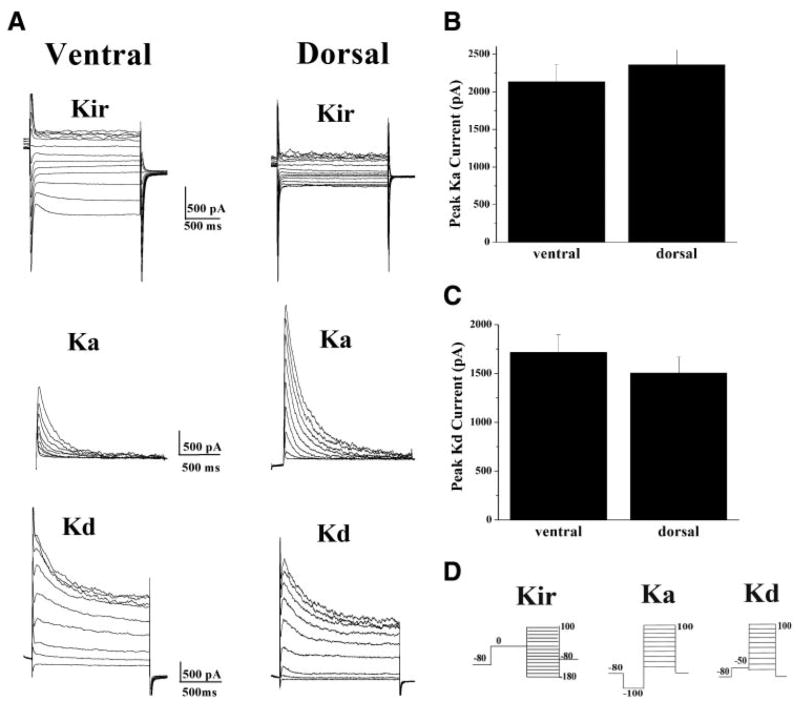Fig. 4.
There is no statistical difference in either fast-inactivating (Ka) or delayed-rectifier (Kd) potassium currents in the dorsal and ventral horn. A: representative examples of Kir, Ka, and Kd currents from astrocytes in the ventral and dorsal region of the spinal cord. Kir currents are consistently smaller in the dorsal horn, whereas Ka (middle) and Kd currents (bottom) in the 2 regions are variable. B and C: mean data reveals there is no statistical difference between Ka (2,132.3 ± 225.4 pA, ventral, n = 33, and 2,358.3 ± 199.7 pA, dorsal, n = 31) or Kd (1,714.3 ± 179.7 pA, ventral, n = 33, and 1,504.6 ± 161.5 pA, dorsal, n = 31) currents in the 2 regions. D: protocols used to isolate Kir, Ka, and Kd currents. The protocol used to activate Ka currents activates both Ka and Kd currents, therefore a point by point subtraction (Ka − Kd) is used to isolate Ka currents.

